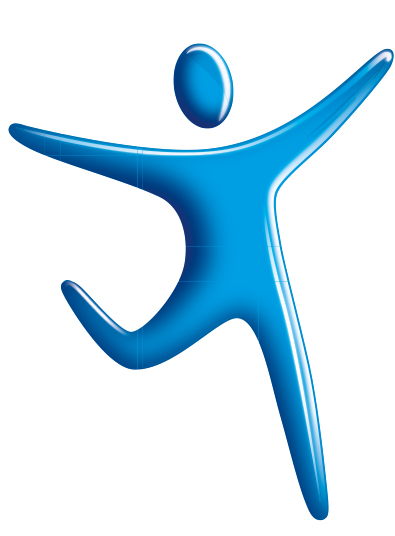Summary
Voltarol Osteoarthritis Joint Pain Relief 1.16% Gel contains the NSAID diclofenac. It is formulated to be rubbed into the skin to provide relief of pain and a reduction in inflammation in joints, including pain associated with osteoarthritis.
Key points:
- Advise customers to gently rub the gel into the affected skin 3-4 times a day
- It can be used by adults and children aged 14 years and over
- Topical application may reduce the potential for adverse systemic side effects.
To complete the module, answer the multiple choice questions on the following page. The questions all relate to the content of the video clips.
Thank you for learning with us.

1. NHS Joint Pain. Available from www.nhs.uk/conditions/joint-pain (Accessed December 2018)
2. NHS Osteoarthritis. Available from www.nhs.uk/conditions/osteoarthritis (Accessed December 2018)
3. NHS Supportive treatments in osteoarthritis. Available from www.nhs.uk/conditions/osteoarthritis/treatment/#supportive-treatments (Accessed December 2018)
4. NICE Clinical guideline [CG177]. Osteoarthritis: care and management Available from www.nice.org.uk/guidance/cg177/chapter/1-Recommendations (Accessed December 2018)
5. NICE Clinical Knowledge Summary: Sprains and strains. Available from https://cks.nice.org.uk/sprains-and-strains#!scenario (Accessed December 2018)
Video references
1. Voltarol Osteoarthritis Joint Pain Relief 1.16% Gel SPC. Accessed Jan 2019. https://www.medicines.org.uk/emc/product/8774
2. Hasler-Nguyen N and Fotopoulos G. Effect of rubbing on the in vitro skin permeation of diclofenac-diethylamine 1.16% gel. BMC res Notes. 2012 Jun 21;5:321
3. Cvec G and Blume G. New, highly efficient formulation of diclofenac for the topical, transdermal administration in ultradeformable drug carriers, Transfersomes. Biochim Biophys Acta. 2001 Oct 1;1514(2):191-205
4. Hug AM, Schmidts T, kuhlmann J, et al. Skin hydration and cooling effect produced by the Voltaren® vehicle gel. Skin res Technol. 2012 May;18(2):199-206
5. Muller M, Mascher H, Kikuta C, et al. Diclofenac concentrations in defined tissue layers after topical administration. Clin Pharmacol Ther. 1997 Sep;62(3):293-9
6. Singh P and Roberts MS. Skin permeability and local tissue concentrations of nonsteroidal anti-inflammatory drugs after topical application. J Pharmacol Exp Ther. 1994 Jan;268(1):144-51
7. Korotkova M, Lundberg IE. The skeletal muscle arachidonic acid cascade in health and inflammatory disease. Nat Rev Rheumatol. 2014;10(5):295-303
8. Martin HA, Basbaum Al, Goetz EJ, et al. Leukotriene B4 decreases the mechanical and thermal thresholds of C-fiber nociceptors in the hairy skin of the rat. J Neurophysiol 1988 Aug;60(2):438-45
9. Ricciotti E, FitzGerald GA. Prostaglandins and inflammation. Arterioscler Thromb Vasc Biol. 2011;31(5):986-1000
10. Kidd BL, Urban LA. Mechanisms of inflammatory pain. Br J Anaesth. 2001;87(1):3-11
11. Dreiser RL. Topical antirheumatic drug therapy: current practice and future trends. Eur J Rheumatol Inflamm. 1994;14(4):3-8
12. Gehanno P, Dreiser RL, lonescu E, et al. Lowest effective single dose of diclofenac for antipyretic and analgesic effects in acute febrile sore throat. Clin Drug Investig. 2003;23(4):263-271
13. Gan TJ. Diclofenac: an update on its mechanism of action and safety profile. Curr Med res Opin. 2010;26(7):1715-31
14. van Erk MJ, Wopereis S, Rubingh C, et al. Insight in modulation of inflammation in response to diclofenac intervention: a human intervention study. BMC Med Genomics. 2010;23;3:5
15. Warner TD, Giuliano F, Vojnovic I, et al. Nonsteroid drug selectivities for cyclo-oxygenase-1 rather than cyclo-oxygenase-2 are associated with human gastrointestinal toxicity: A full in vitro analysis. Proc Natl Acad Sci USA. 1999;96:7563-7568
16. Mäkelä A, Kuusi T, Schröder T. Inhibition of serum phospholipase-A2 in acute pancreatitis by pharmacological agents in vitro. Scand J Clin Lab Invest. 1997;57(5):401-407
Indications Local symptomatic relief of pain and inflammation including the pain of non-serious arthritic conditions. Dosage and method of use Adults and children aged 14 years and over. Gently rub 2-4 g into skin of affected site 3-4 times daily. Consult doctor if symptoms worsen or do not improve within 7 days or if more than two major joints are affected. Not for use for longer than 14 days unless recommended. Contraindications Patients whose attacks of asthma, urticaria or acute rhinitis are precipitated by aspirin or other NSAIDs. Hypersensitivity to diclofenac, aspirin, other NSAIDs or excipients. Third trimester of pregnancy. Concomitant use of other diclofenac products or oral NSAIDs. Children under 14 years. Precautions Do not use on large areas of skin and over a prolonged period. Apply only to intact, non-diseased skin. Do not use with occlusion. Avoid ingestion or contact with eyes or mucous membranes. Caution in patients with previous or active peptic ulceration or suffering from/previous history of asthma. May cause mild localised skin irritation. Discontinue use if skin rash develops. Do not smoke and avoid naked flames. Side effects See SPC for full details. Rash, erythema, pruritus, dermatitis, eczema. Hypersensitivity (including urticaria), angioneurotic oedema. Asthma. Photosensitivity reactions. Product licence number, legal category, pack size and RSP (excl. VAT) PL 44673/0155 (P) 50 g £6.91, 100 g £11.24, 180 g £16.66. PL holder GlaxoSmithKline Consumer Healthcare (UK) Trading Limited, 980 Great West Road, Brentford, Middlesex, TW8 9GS, U.K. Date of preparation October 2019.
